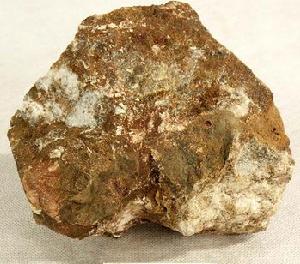In fact there was so much Iridium, scientists realised the asteroid must have been a staggering ten kilometres in diameter.
事实上,铱的含量非常高,科学家们相信小行星的直径一定大得令人难以置信,至少有10公里。
If the theory was right, the impact would have created a fireball, equivalent to ten billion Hiroshima bombs.
如果这个理论是对的,那么大碰撞就会产生火球,其释放的能量相当于100亿枚广岛原子弹。
The shock wave alone would have destroyed all life for hundreds of miles around.
单单是冲击波就能消灭方圆数百英里内的所有生物。
All they had to do to prove the theory was find the evidence.
要想证明这种理论,他们必须找到证据。
It was Jan Smit who first discovered the traces of the impact.
Jan Smit是最早发现大碰撞遗迹的科学家。
Hidden in the KT boundary layers, he found these tiny balls of rock.
他在第三纪界线层中找到了这些细小的岩粒。
Careful analysis revealed the telltale signs of their origin.
经过仔细分析后,他发现了它们形成的原因。

These are called spherules, they're actually made of round rock globules
它们叫做小球体,它们都来自岩熔球,
so we know they're condensed from a very hot vapour cloud
所以我们知道它们是炙热气云凝固后形成的,
and it also tells us some of the mineralogy in there tells us
它还说明了一些矿物学事实,也就是,
that these spherules, these globules originated at very high temperatures.
这些小球体,或者说岩熔球的最初温度都非常高。
That's exciting, we know something hot happened and hot is associated with an impact.
这真令人兴奋,它证明了极热的事实,而且它与大碰撞有关。











